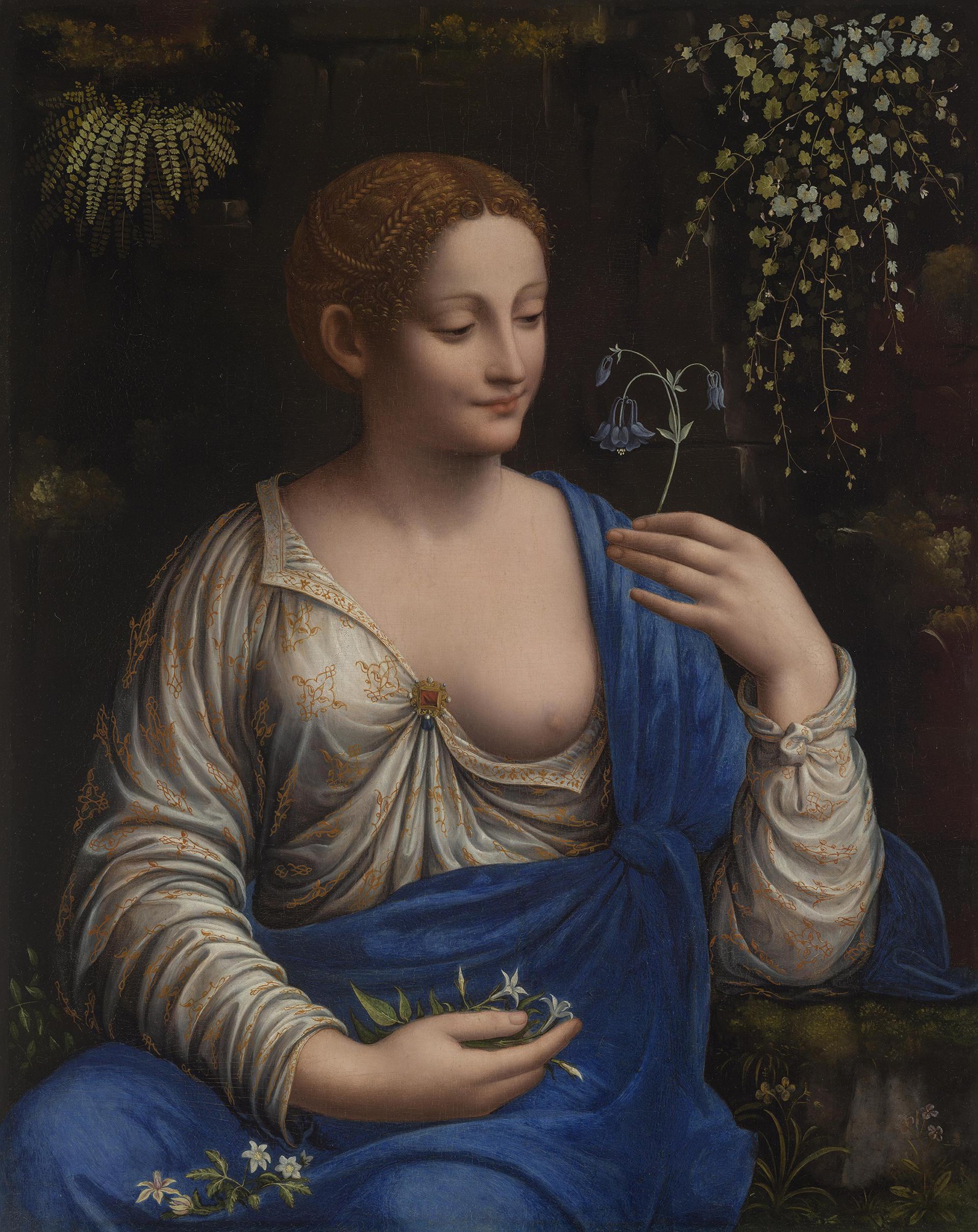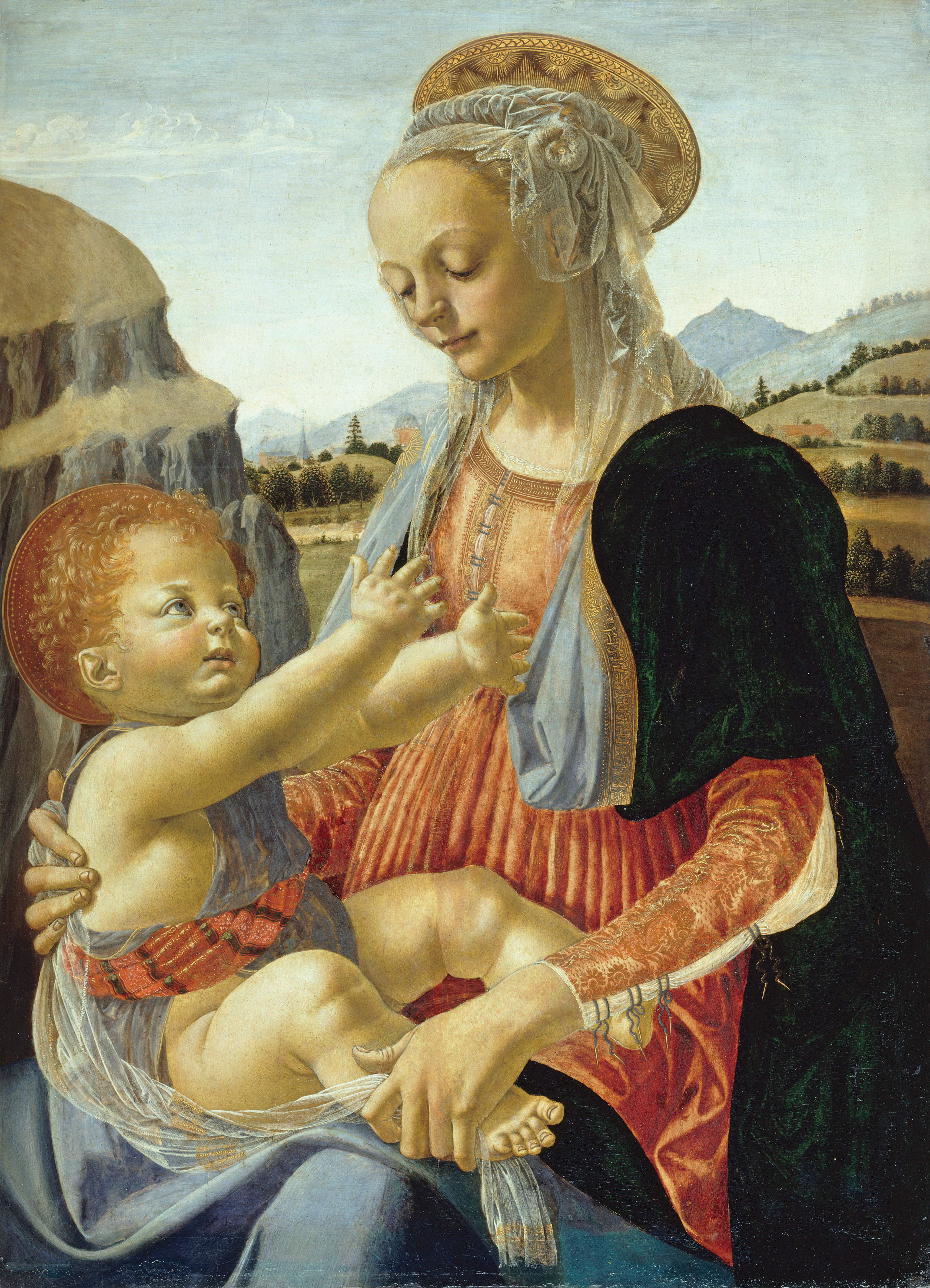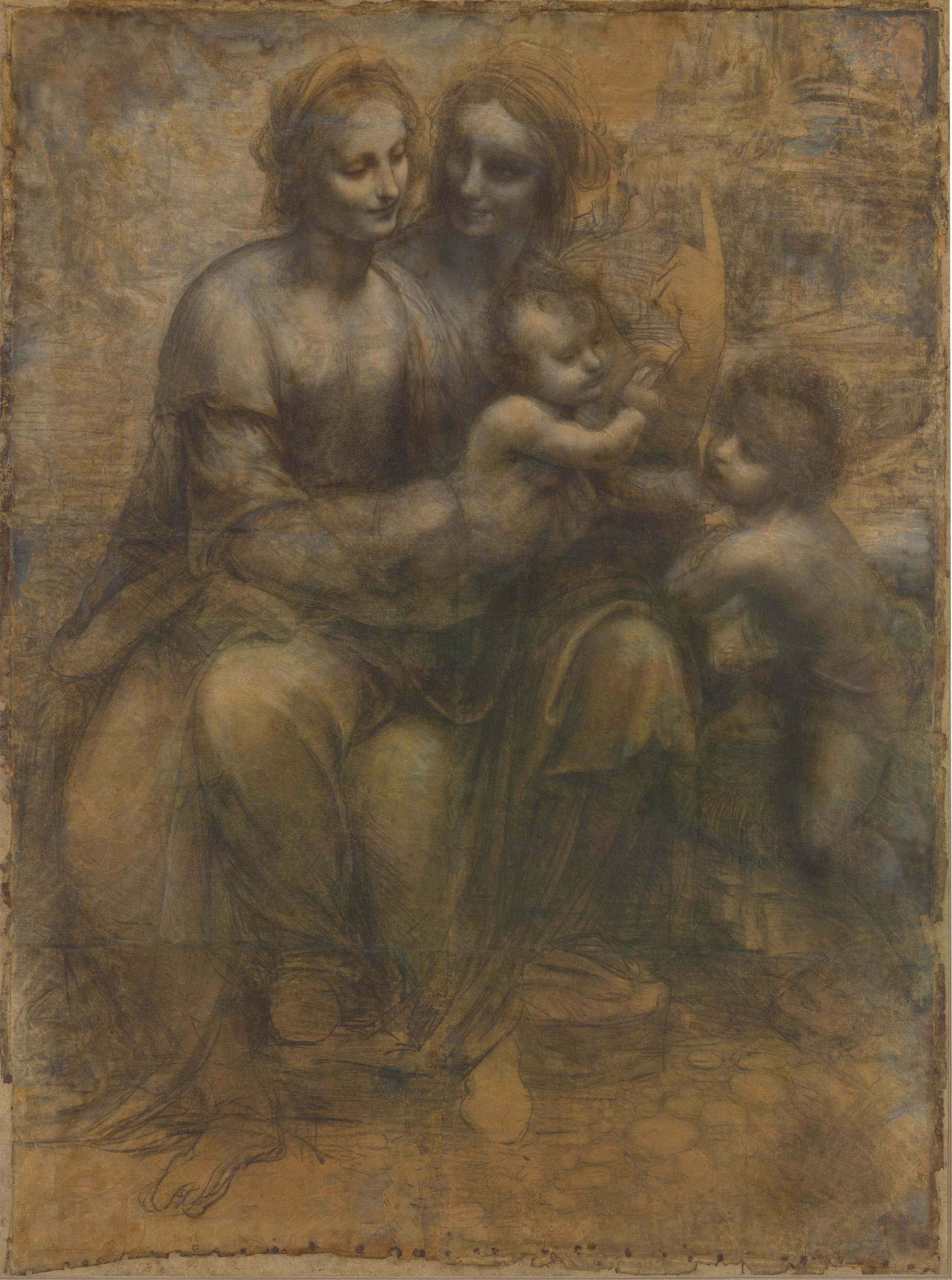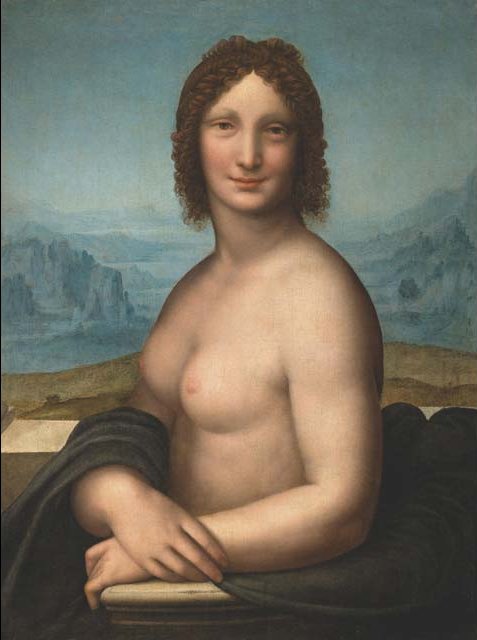|
Francesco Melzi
Francesco Melzi, or Francesco de Melzi (1491–1570), was an Italian painter born into a family of the Milanese nobility in Lombardy. He became a pupil of Leonardo da Vinci and remained as his closest professional assistant throughout his career. After da Vinci's death he became the literary executor of all da Vinci's papers, editing them into a manuscript on painting he published as ''Tratatto della Pittura'' reatise on Paintingor a compilation entitled the ''Codex Urbinas''. Early life and training Francesco's father, Gerolamo Melzi, was an engineer for Francesco II Sforza's military, and a captain in the militia in Milan under Louis XII. Francesco lived with his family in the Villa Melzi in Vaprio d'Adda (not to be confused with the Villa Melzi d'Eril in Bellagio, Lombardy), which today is still under the ownership of the Dukes Melzi d'Eril. Francesco grew up in the Milanese court, and was raised with proper manners and was granted a good education, which ... [...More Info...] [...Related Items...] OR: [Wikipedia] [Google] [Baidu] |
Giovanni Antonio Boltraffio
Giovanni Antonio Boltraffio (or Beltraffio) (1466 or 1467 – 1516) was an Italian painter of the High Renaissance from Lombardy, who worked in the studio of Leonardo da Vinci. Boltraffio and Bernardino Luini are the strongest artistic personalities to emerge from Leonardo's studio. According to Giorgio Vasari, he was of an aristocratic family and was born in Milan. Paintings His major painting of the 1490s is the ''Resurrection'' (painted with fellow da Vinci pupil Marco d'Oggiono and now in the Gemäldegalerie, Berlin). A ''Madonna and Child'' in the Museo Poldi Pezzoli of Milan, is one of the high points of the Lombard Quattrocento. His portraits, often in profile, and his half-length renderings of the Madonna and Child are Leonardesque in conception, though the clean hard edges of his outlines lack Leonardo's '' sfumato''. In Bologna, where he remained in 1500-1502, he found sympathetic patrons in the Casio family, of whom he painted several portraits and for whom he prod ... [...More Info...] [...Related Items...] OR: [Wikipedia] [Google] [Baidu] |
Codex Trivulzianus
The Codex Trivulzianus is a manuscript by Leonardo da Vinci that originally contained 62 sheets, but today only 55 remain. It documents Leonardo's attempts to improve his modest literary education, through long lists of learned words copied from authoritative lexical and grammatical sources. The manuscript also contains studies of military and religious architecture. The Codex Trivulzianus is kept at Sforza Castle in Milan, Italy Italy ( it, Italia ), officially the Italian Republic, ) or the Republic of Italy, is a country in Southern Europe. It is located in the middle of the Mediterranean Sea, and its territory largely coincides with the homonymous geographical ..., but is not normally available to the public. In the main museum a room also contains frescos painted by Leonardo. External links Institute Institute and Museum of the History of Science - Florence, Italy [...More Info...] [...Related Items...] OR: [Wikipedia] [Google] [Baidu] |
Lives Of The Most Excellent Painters, Sculptors, And Architects
''The Lives of the Most Excellent Painters, Sculptors, and Architects'' ( it, Le vite de' più eccellenti pittori, scultori, e architettori), often simply known as ''The Lives'' ( it, Le Vite), is a series of artist biographies written by 16th-century Italian painter and architect Giorgio Vasari, which is considered "perhaps the most famous, and even today the most-read work of the older literature of art",Max Marmor, ''Kunstliteratur'' translated by , in Art Documentation Vol 11 # 1, 1992 "some of the 's most influential writing on ... [...More Info...] [...Related Items...] OR: [Wikipedia] [Google] [Baidu] |
Giorgio Vasari
Giorgio Vasari (, also , ; 30 July 1511 – 27 June 1574) was an Italian Renaissance Master, who worked as a painter, architect, engineer, writer, and historian, who is best known for his work ''The Lives of the Most Excellent Painters, Sculptors, and Architects'', considered the ideological foundation of all art-historical writing, and the basis for biographies of several Renaissance artists, including Leonardo da Vinci and Michelangelo. Vasari designed the ''Tomb of Michelangelo'' in the Basilica of Santa Croce, Florence that was completed in 1578. Based on Vasari's text in print about Giotto's new manner of painting as a ''rinascita'' (rebirth), author Jules Michelet in his ''Histoire de France'' (1835) suggested adoption of Vasari's concept, using the term ''Renaissance'' (rebirth, in French) to distinguish the cultural change. The term was adopted thereafter in historiography and still is in use today. Life Vasari was born prematurely on 30 July 1511 in Arezzo, Tuscany. ... [...More Info...] [...Related Items...] OR: [Wikipedia] [Google] [Baidu] |
Andrea Del Verrocchio
Andrea del Verrocchio (, , ; – 1488), born Andrea di Michele di Francesco de' Cioni, was a sculptor, Italian painter and goldsmith who was a master of an important workshop in Florence. He apparently became known as ''Verrocchio'' after the surname of his master, a goldsmith. Few paintings are attributed to him with certainty, but a number of important painters were trained at his workshop. His pupils included Leonardo da Vinci, Pietro Perugino and Lorenzo di Credi. His greatest importance was as a sculptor and his last work, the Equestrian statue of Bartolomeo Colleoni in Venice, is generally accepted as a masterpiece. Life Verrocchio was born in Florence in around 1435. His father, Michele di Francesco Cioni, initially worked as a tile and brick maker, then later as a tax collector. Verrocchio never married, and had to provide financial support for some members of his family. He was at first apprenticed to a goldsmith. It has been suggested that he was later apprenticed to D ... [...More Info...] [...Related Items...] OR: [Wikipedia] [Google] [Baidu] |
Francesco Melzi - Portrait Of Leonardo - WGA14795
Francesco, the Italian (and original) version of the personal name " Francis", is the most common given name among males in Italy. Notable persons with that name include: People with the given name Francesco * Francesco I (other), several people * Francesco Barbaro (other), several people * Francesco Bernardi (other), several people *Francesco di Giorgio Martini (1439-1501), Italian architect, engineer and painter * Francesco Berni (1497–1536), Italian writer * Francesco Canova da Milano (1497–1543), Italian lutenist and composer * Francesco Primaticcio (1504–1570), Italian painter, architect, and sculptor * Francesco Albani (1578–1660), Italian painter * Francesco Borromini (1599–1667), Swiss sculptor and architect * Francesco Cavalli (1602–1676), Italian composer * Francesco Maria Grimaldi (1618–1663), Italian mathematician and physicist * Francesco Bianchini (1662–1729), Italian philosopher and scientist * Francesco Galli Bib ... [...More Info...] [...Related Items...] OR: [Wikipedia] [Google] [Baidu] |
Mona Lisa
The ''Mona Lisa'' ( ; it, Gioconda or ; french: Joconde ) is a half-length portrait painting by Italian artist Leonardo da Vinci. Considered an archetypal masterpiece of the Italian Renaissance, it has been described as "the best known, the most visited, the most written about, the most sung about, the most parodied work of art in the world". The painting's novel qualities include the subject's enigmatic expression, the monumentality of the composition, the subtle modelling of forms, and the atmospheric illusionism. The painting has been definitively identified to depict Italian noblewoman Lisa Gherardini, the wife of Francesco del Giocondo. It is painted in oil on a white Lombardy poplar panel. Leonardo never gave the painting to the Giocondo family, and later it is believed he left it in his will to his favored apprentice Salaì. It had been believed to have been painted between 1503 and 1506; however, Leonardo may have continued working on it as late as 1517. It was ... [...More Info...] [...Related Items...] OR: [Wikipedia] [Google] [Baidu] |
Vertumnus And Pomona (Melzi)
''Vertumnus and Pomona'' is a painting by Francesco Melzi dated to . It depicts the Roman god of the seasons Vertumnus in the guise of an old woman attempting to woo the lady Pomona. It is in the collection of the Gemäldegalerie of the Berlin State Museums. Analysis ''Vertumnus and Pomona'' is painted in the style typical of the Leonardeschi, utilizing Leonardo da Vinci's female facial type with downcast eyes and tight smile, Leonardo's sfumato technique, and reflecting Leonardo's observation of botany.Henry, Rodman. ''GIOVANNI ANTONIO BOLTRAFFIO-A STYLISTIC STUDY OF HIS WORK'', (PhD. Dissertation, Boston University, 1959), pp. 106–108. The painting likewise draws from known Leonardo compositions from before 1513: For example, Melzi's painting had the same color scheme as Leonardo's ''Virgin and Child with Saint Anne'' at the Louvre. The tall mountains in the background, especially including the arched bridge on the left, are drawn from the background of the ''Mona Lisa.'' I ... [...More Info...] [...Related Items...] OR: [Wikipedia] [Google] [Baidu] |
Antonio Gaddiano
Antonio is a masculine given name of Etruscan origin deriving from the root name Antonius. It is a common name among Romance language-speaking populations as well as the Balkans and Lusophone Africa. It has been among the top 400 most popular male baby names in the United States since the late 19th century and has been among the top 200 since the mid 20th century. In the English language it is translated as Anthony, and has some female derivatives: Antonia, Antónia, Antonieta, Antonietta, and Antonella'. It also has some male derivatives, such as Anthonio, Antón, Antò, Antonis, Antoñito, Antonino, Antonello, Tonio, Tono, Toño, Toñín, Tonino, Nantonio, Ninni, Totò, Tó, Tonini, Tony, Toni, Toninho, Toñito, and Tõnis. The Portuguese equivalent is António (Portuguese orthography) or Antônio (Brazilian Portuguese). In old Portuguese the form Antão was also used, not just to differentiate between older and younger but also between more and less important. In Galician ... [...More Info...] [...Related Items...] OR: [Wikipedia] [Google] [Baidu] |
University Of California, Los Angeles Library
The library system of the University of California, Los Angeles, is one of the largest academic research libraries in North America, with a collection of over twelve million books and 100,000 serials. The UCLA Library System is spread over 12 libraries, 12 other archives, reading rooms, research centers and the Southern Regional Library Facility, which serves as a remote storage facility for southern UC campuses. It is among the ten largest academic research library systems in the United States, and its annual budget allocates $10 million for the procurement of digital and print material. It is a Federal Depository Library, California State Depository Library, and United Nations Depository Library. History of the library system 1883–1944: Laying a foundation The University Library at Los Angeles was founded in 1883, two years after the establishment of what was then known as the California State Normal School. The library's first acquisition was ''Survey of Wyoming and Idaho'' b ... [...More Info...] [...Related Items...] OR: [Wikipedia] [Google] [Baidu] |
Elmer Belt Library Of Vinciana
The Elmer Belt Library of Vinciana is a special collection at the University of California, Los Angeles which focuses on Leonardo da Vinci-- life, art, thought, and enduring cultural influence. It is the most extensive research collection concerning Leonardo in the United States. It was donated to UCLA in several installments between 1961 and 1966 by Dr. Elmer Belt (1893-1980), an internationally recognized urologist; a pioneer in gender affirmation surgery; a strong supporter in the founding of the UCLA School of Medicine; an important public health advocate; and a lifelong bibliophile and book collector. The Elmer Belt Library of Vinciana was officially dedicated in 1966 when UCLA opened in its Dickson Art Center a suite of wood-paneled and antique-filled rooms especially designed to house Belt’s collection. However, in 2002, the Dickson Art Center was transformed into the Broad Art Center, and the Belt Library was removed from its quarters and ultimately its holdings were i ... [...More Info...] [...Related Items...] OR: [Wikipedia] [Google] [Baidu] |
Salaì
Gian Giacomo Caprotti da Oreno, better known as Salaì (1480 – January 19, 1524) was an Italian artist and pupil of Leonardo da Vinci from 1490 to 1518. Salaì entered Leonardo's household at the age of ten. He created paintings under the name of Andrea Salaì. He was described as one of Leonardo's students and lifelong companion and servant and was the model for Leonardo's '' St. John the Baptist,'' ''Bacchus and Angelo incarnato.'' Early life Salaì was born in 1480 as son of Pietro di Giovanni, a tenant of Leonardo's vineyard near the Porta Vercellina, Milan. He joined Leonardo's household at the age of ten as an assistant. Giorgio Vasari describes Salaì as "a graceful and beautiful youth with curly hair, in which Leonardo greatly delighted". Although Leonardo described him as "a liar, a thief, stubborn, and a glutton" and he stole from Leonardo on at least five occasions, he kept Salaì in his household for more than 25 years, in which Salaì trained as an artist ... [...More Info...] [...Related Items...] OR: [Wikipedia] [Google] [Baidu] |







.jpg)
%2C_ca._1590.jpg)
